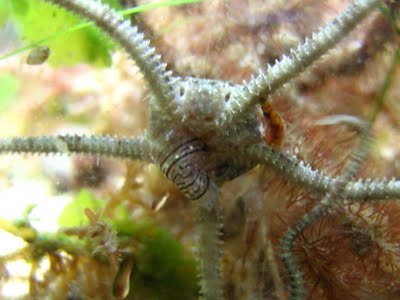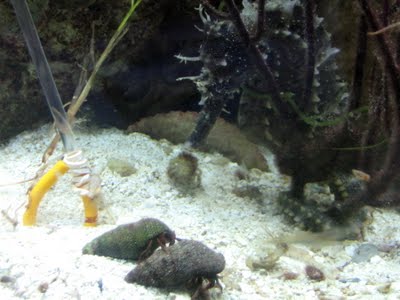We have study the feeding habits our seahorses and have found some interesting habits and preferences. From all the information that we have read about seahorse, the number one issue is feeding. Some seahorse will simply starve to the death without their preferred diet. With that said the key to uncovering what the seahorse prefers is to give them a grand seafood buffet. One important note; it appears that a seahorse can take one look at a food item and know if it will fit in their mouth. If it is to big they will ignore it, even if the item is their preferred food.
For example we have found the Lois prefers hermit crabs then ghost shrimp and then brine. As it turns out the ghost shrimp will need to be a certain size otherwise Lois will take a quick look at them and turn away. When a ghost shrimp reaches the age where it’s stripes are dark, then it is too big for Lois. If the shrimp is just starting to get it stripes Lois will snap them up.
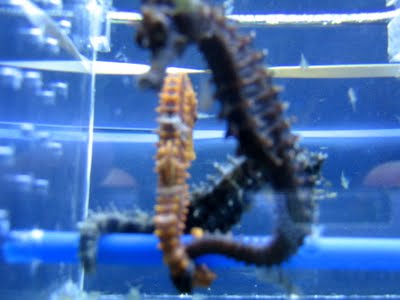
Lucy likes copepods then brine and then ghost shrimp. She does not really seem too interest in hermit crabs. She tends to hang around the rocks to hunt. When we put the feeding corral in the tank Lois and Lucy jump in and start dancing for their brine. Lucy eats more aggressively then Lois, but when she is done she want out. Where Lois will hang out for an hour or so in the corral.
Once the seahorses are done eating we usually open the gate to let the seahorse out and the let the remaining food go to the cleaning crew. If there was not a cleaning crew then we would need to remove any unwanted food. Between the ghost shrimp, starfish and the few pipefish they tend to cleanup better than dial-a-maid.
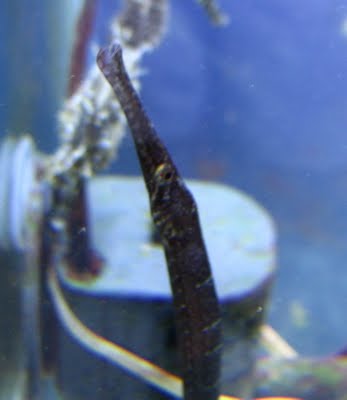 A pipefish picking up the left over brine
A pipefish picking up the left over brine
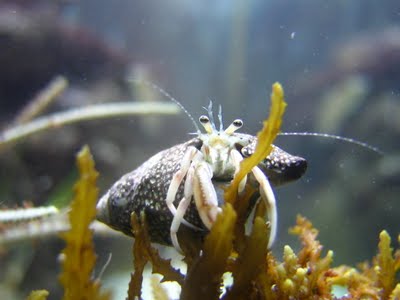 One of many crabs picking up the left overs from the left overs.
One of many crabs picking up the left overs from the left overs.
However our cleanup crew is one of the reason we need to feed the seahorses in the feeding corral. The shrimp which are currently out of control will eat anything and everything, before any of the seahorses get a change. The current plan is to allow the current population to act as food and cleanup crew. Any time we catch shrimp to feed the seahorse we remove the shrimps tail. This will slow down the shrimp so the seahorse can catch them and it reduces their life span to a few hours. Even though the shrimp are a pain, once the larger ghost shrimp give birth, it’s like Thanksgiving dinner for everyone. So at this point I’m not sure if having the ghost in the tank is a good idea or not.
Now the male seahorse Clyde is another ball game. I think he is a seamule and not a seahorse. He is very stubborn. Some time he eats very well other times he refuses everything. Even a ghost attached to a feeding stick. Which reminds me of the movie King Kong.

We have also noticed that all the seahorses, with the exception of Mini the dwarf seahorse, will not eat live or dead food while it is not moving. We now can take a fresh dead shrimp, attach it to the feeding stick and move it around a little bit and the seahorses will at least be interested in eating it and sometimes they will snap it up. After about 20 minutes of looking at it. Bottom line, wild seahorses can be very difficult to feed and requires a lot of work.
